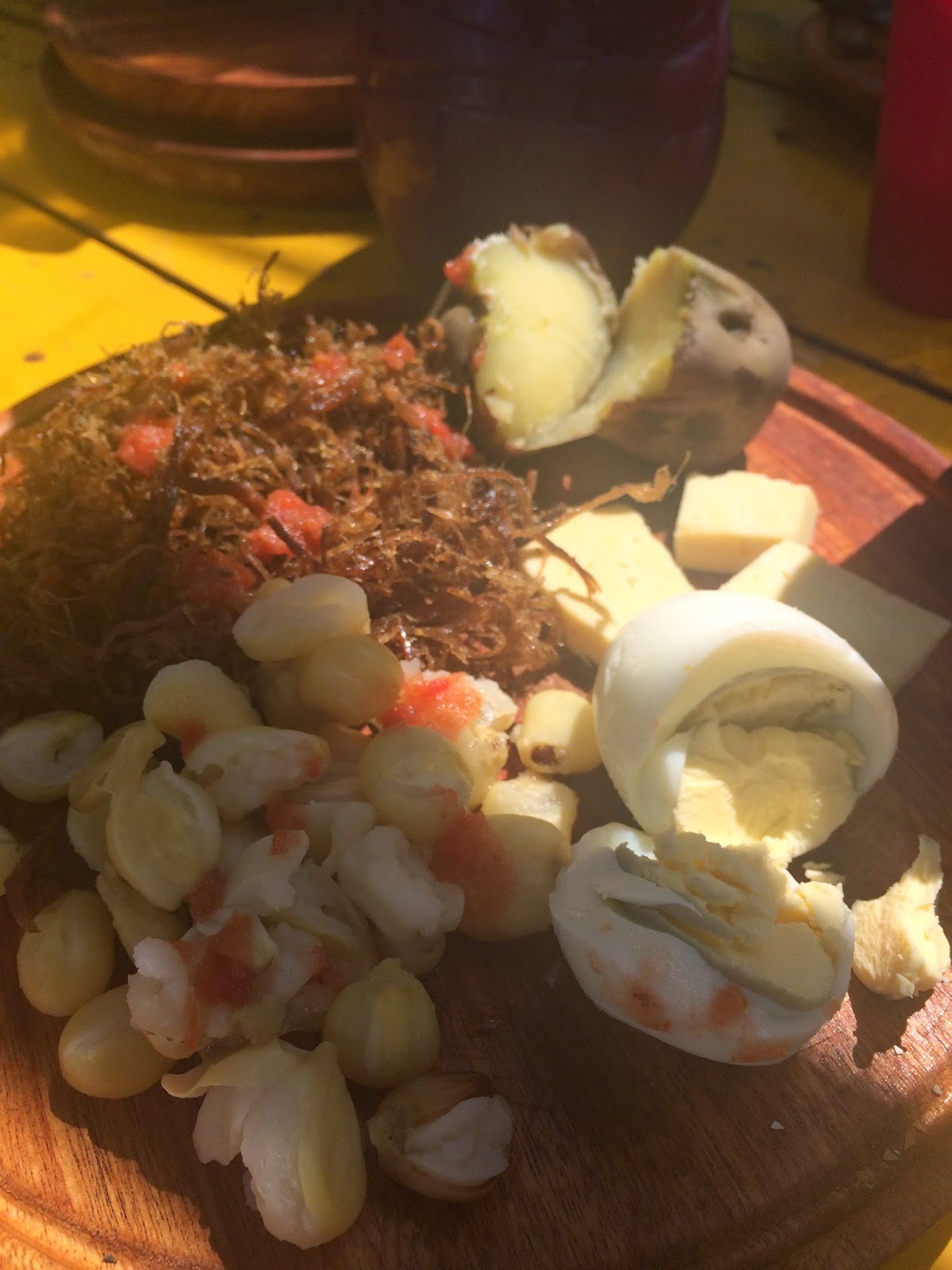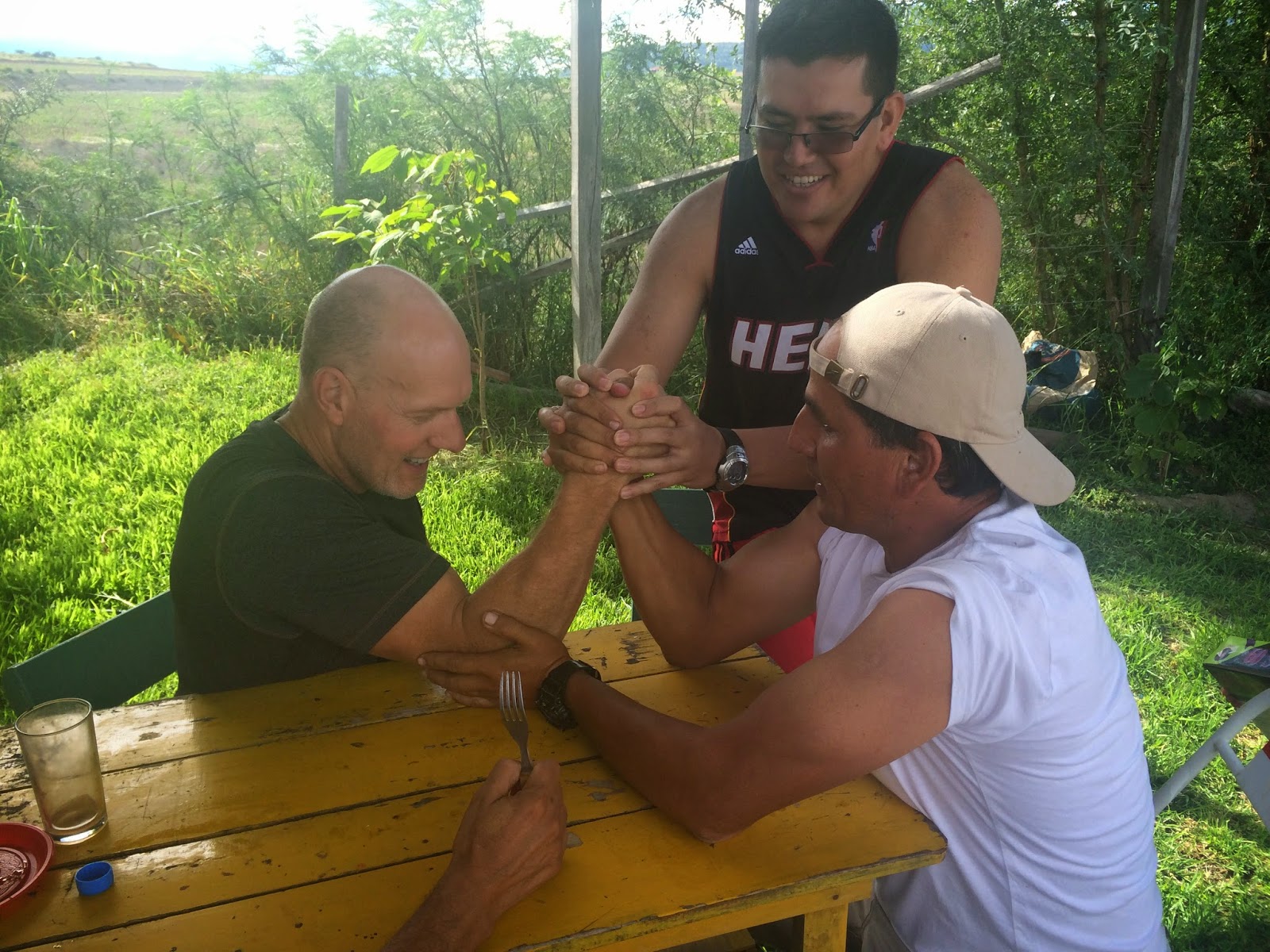 |
| Our route through Southern Bolivia, from the border to the Salar de Uyuni |
The road from Bermejo to Tarija, our first experience of the country, was a perfect introduction. 1-2 lanes through the forest, along steep cliffs that were sliding and letting loose a lot of rock fall, having just come out of the rainy season. It made for an exciting journey in the dark to reach Tarija, where we thankfully had a new friend awaiting us!

 |
| We met Jorge at a Level 1 seminar in Buenos Aires in February. He was so excited to hear we would be coming to his country and has been an incredible resource and tour guide for us! |
Tarija
is one of the prettiest regions of Bolivia. It has valleys, low mountains, forests and plains with a wonderful temperate climate. It is also home to some of the highest vineyards in the world. We toured several wineries, enjoyed award winning wines, and experienced Singani, a pomace brandy distilled from white muscat grapes. It is produced only in the Bolivian Andes and is considered the national liquor of Bolivia.


THE LOCAL EXPERIENCE OF FAMILY -
We had the special privilege of being invited to share a family event with Jorge's family at their country home. They have their own vineyards and it's the end of the season. We picked grapes, ate traditional Bolivian food - a chicken based soup call Sopa de Mani, Charkekan - llama served with hominy, cheese, an egg, and potatoes. We drank wonderful local wine, local beer, and Chicha - much like Sangria. There was, in fact, NO water available that day! Ha! That is probably what led to all the shenanigans of arm wrestling and lots of banter and laughter with our new friends.




 |
| The llama was prepared much like pulled pork, but drier. Delicious! |
 |
| Ernesto, our wonderful host, toasting Mike that he will have children as a result of this day....ha. |
 |
| Traditional grape picking hats were in order! |


The road from Tarija to Tupiza was a 6 hour rough dirt road with steep climbs to 13,800 ft. elevation. Unfortunately, the van engine didn't do well again at elevation and we died several times out there. We were entertained by peeping goats and dueling cows in the sunset, and finally found a place to pull over and let the van rest for the night. We were able to go on the next day and made it the rest of the way without incident. Unsure what the issue is - perhaps the O2 sensor?


 |
| Tupiza market shopping. |


Salar de Uyuni
is the world's largest salt flat at 10,582 square kilometers and is at 3,656m elevation (12,000 ft.)The salt is over 10 meters (33 ft) thick in the center. In the dry season, the salt plains are a completely flat expanse of dry salt, and the salar is a pure white expanse of the greatest nothing imaginable – just blue sky, white ground and you.
In the wet season, it is covered with a thin sheet of water that is still drivable. When there’s a little water, the surface perfectly reflects the clouds and the blue sky, and the horizon disappears. If you’re driving across the surface at such times, the effect is positively surreal.
We hit it at the end of the wet season, so we were able to experience both situations on the salt flats, though they were mostly dry where we were.



 |
| Camp for the night. |






View the entire South Bolivia/Salar de Uyuni Flickr photo album HERE
































No comments:
Post a Comment